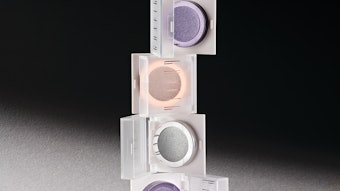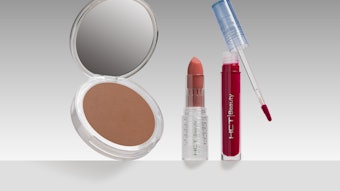- Sustainable alternatives to traditional plastic can be broken down simply to three main groups: recycled, bio-based and additive-based.
- As brand owners evaluate sustainable programs that resonate with consumers, the complete product life cycle is getting more attention.
- When creating a sustainability program, it is important that brands market around the science that was used to determine the environmental benefit.
- Technologies that will thrive will meet the consumers’ needs, the brand’s values and government’s regulations.
While industry experts have differing views on the most sustainable solutions for consumer product manufacturing and primary packaging materials, most agree that plastics are an area of significant focus. Plastics are the most useful, convenient and cost-effective option for the marketplace, though traditional, petroleum-based plastics are incredibly taxing on the environment—in both their manufacture and their end of life. As such, there has been a growing trend toward alternatives to traditional plastics to meet the needs of brand owners pushing toward sustainability.
Sustainable alternatives to traditional plastic come in many forms, but can be broken down simply to three main groups: recycled, bio-based and additive-based. While each alternative is clamoring for its share of the marketplace, each needs to be viewed separately, as they provide value in unique ways. Of the alternatives, recycled plastic is rapidly growing in popularity as advancements allow for higher-performing resins and greater consistency in processing—comparable to virgin-grade resins. Bio-based plastics have gained a lot of attention for the innovation and science required to make their material from biological sources. While advancements in the processing and consistency make bio-based plastics competitive with all other alternatives, material cost remains a barrier in many industries, though less a factor with the high margins of beauty products. The additive alternatives claim the best of both words, claiming biodegradability at a price similar to traditional resins, but often lack certification or substantiation by a recognized third party scientific testing laboratory.
Recycled Plastic Has Matured
Marketability is a big factor in choosing the appropriate sustainable resin solution, however products made from alternative materials must perform equal to or better than their predecessors in order to gain full acceptance within the consumer marketplace. A great example of this is found in the use of recycled plastic. Until five years ago, recycled plastic products were used only for less technical, rugged applications such as park benches and decking. Advancements in the quality and consistency of recycled plastic has allowed high-end consumer product brands to offer premium products that are made using 100% postconsumer recycled (PCR) plastic. Nextlife, for example, brought to market 100% PCR polypropylene and polystyrene resins that are U.S. Food and Drug Administration (FDA)-approved for food contact. Brand owners are finding that consumers making purchasing decisions based on environmental impact limit the premium they are willing to pay for such a product. PCR plastic is the ideal solution—competitive in terms of cost, performance and marketability while producing an approximately 70% lower carbon footprint when compared to virgin resins.
Closed-loop Programs
As brand owners evaluate sustainable programs that resonate with consumers with an affinity for environmentally friendly companies and products, the complete product life cycle is getting more and more attention. The development of closed-loop sustainability programs can be an effective solution. Closed-loop programs are designed to look at every facet of the product—from the supply chain utilized to create the materials that go into the product through the end of its useful life, and back again. Nextlife, for example, created a process by which it can supply packaging manufacturers with plastic for new products made from 100% PCR content, which can even be sourced from its own recycled plastic waste stream.
The waste generated by beauty companies can be significant; loss prevention methods promote larger packaging as safer for the bottom line, but that has led to excess waste that often ends up in landfills rather than recycling centers. Programs that decrease the amount of new plastic resin used to create products while providing options for a reclaiming system through which all of the primary and secondary product and packaging can be recovered for recycling is an answer for this waste. The reclamation can happen behind the retail shelves or by involving customers at the point of sale, similar to plastic bag reclaiming programs promoted by supermarkets. Once plastics are received, they can be sorted, washed, dried and extruded, turning the plastic contents into pure-grade PCR resin . The resin pellets can be returned to the packagers, allowing them to reuse their own plastic waste for new products, even in those that require FDA approval—closing the loop on the product life cycle.
Substantiating Sustainable Claims
When creating a sustainability program, it is important that brands market around the science that was used to determine the environmental benefit. Claiming such benefits comes with great responsibility and brings with it immense scrutiny. A growing tendency toward irresponsible or misleading environmental claims, a.k.a. greenwashing, has led to government intervention and consumer skepticism. The growing adoption of sustainable alternatives has also brought with it an explosion of creativity by marketing departments around communicating the unique properties and characteristics that set their material or products apart, leading to confusion among brand owners and consumers alike. The Federal Trade Commission has even stepped in with the Green Guides—a set of guiding principles related to environmental marketing and advertising claims, requiring scientific substantiation in order to claim benefits such as recycled content, biodegradable and compostable. Many responsible brands are even taking their certification a step further by conducting Life Cycle Assessments, third party cradle-to-grave scientific analysis evaluating the environmental impacts of a product or service.
What’s in Store
As America aims to move further from its dependence on petroleum-based resources such as traditional plastic resins, the market for alternatives will continue to expand. Eliminating plastics altogether is not a practical solution, but adapting manufacturing and marketing programs to promote more prudent consumer use will be a trend for years to come. Each alternative has its own valuable characteristics and so there is room in the market for many, but only a few of the innovations seen today will gain large acceptance. The technologies that will thrive will be those meeting the consumers’ needs, the brand’s values and government’s regulations.
Jillian Salansky is a director of purchasing and customer service for Nextlife, a provider of sustainable solutions for the consumer, food service packaged goods and housewares industry. Its mission is to offer practical sustainable packaging and product solutions based on high quality PCR materials, scientific substantiation, brand marketing support and unique closed-loop recycling programs.










